UITNODIGING EXPOSITIE INTWINE- VERSTRENGELD |
||
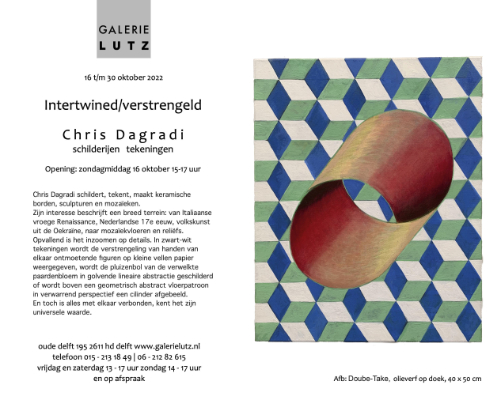 Klik op de afbeelding om een grotere foto te zien. |
||
UITNODIGING LUSTRUMEXPOSITIE 'SALON DES ARTISTES' |
||
 Klik op de afbeelding om een grotere foto te zien. |
||
|
Ondanks de grillige kunstmarkt en een guur cultuurklimaat, viert Galerie
Wijnstraat medio februari haar eerste lustrum. Alle kunstenaars die de afgelopen 5 jaar hebben geëxposeerd, tonen een aantal werken speciaal voor deze 'Salon des Artistes'. De inrichting is dan ook geheel in stijl van de 19e eeuwse Parijse Salon. |
||
Questo Paradiso in Galerie Wijnstraat |
||
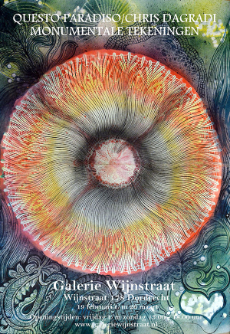
|
||
|
Tegelijkertijd met de expositie " Een Koninklijk Paradijs/ Aert Schouman en de verbeelding van de natuur" in het Dordrechts Museum, organiseert Galerie Wijnstraat te Dordrecht een serie exposities met als thema Questo Paradiso. |
||
Oersymbolen in Galerie Wijnstraat |
|
 Fiorente |
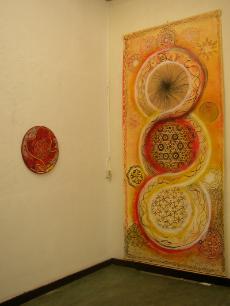 Zonnekleed |
|
Galerie Wijnstraat in Dordrecht presenteert werk van de keramist Chris Dagradi (New York, 1954). |
|
Expositie Nederlands Tegelmuseum |
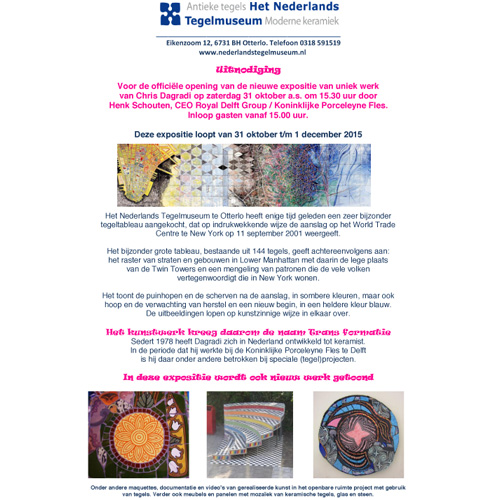
|
Expositie Galerie Lutz 45 jaar |
 |
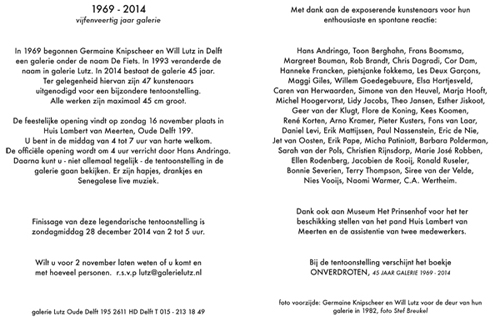 |
Let's get lost |
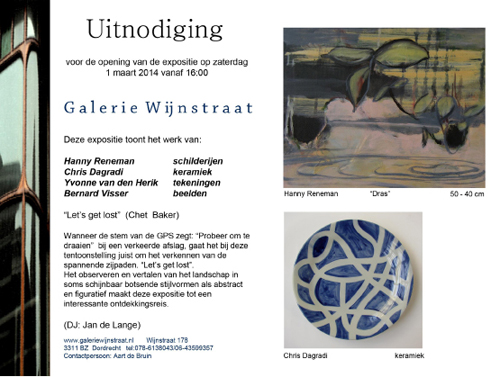 |
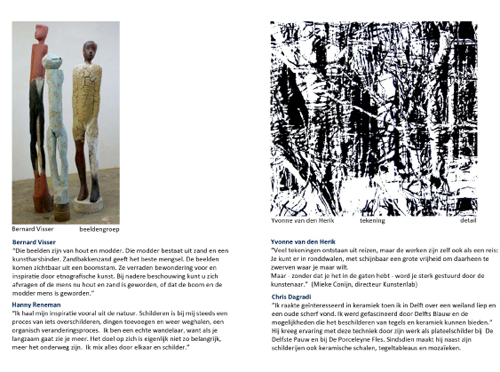 |
Inzicht, Delftse meesters van nu |
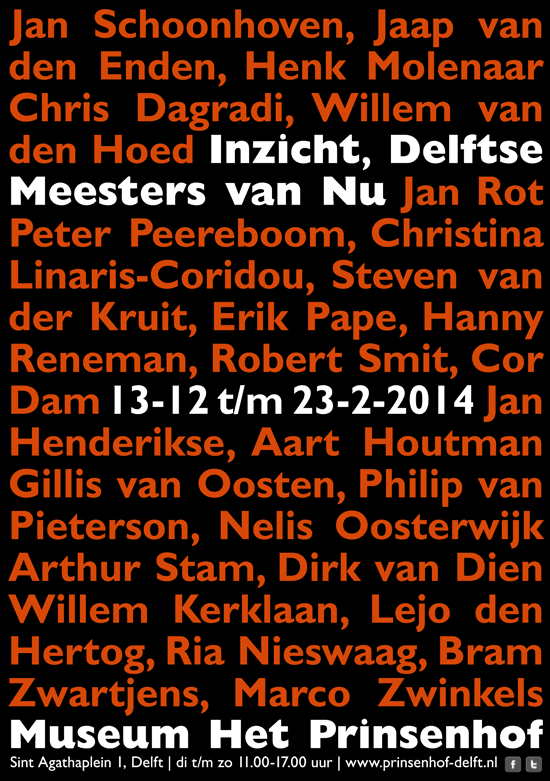 |
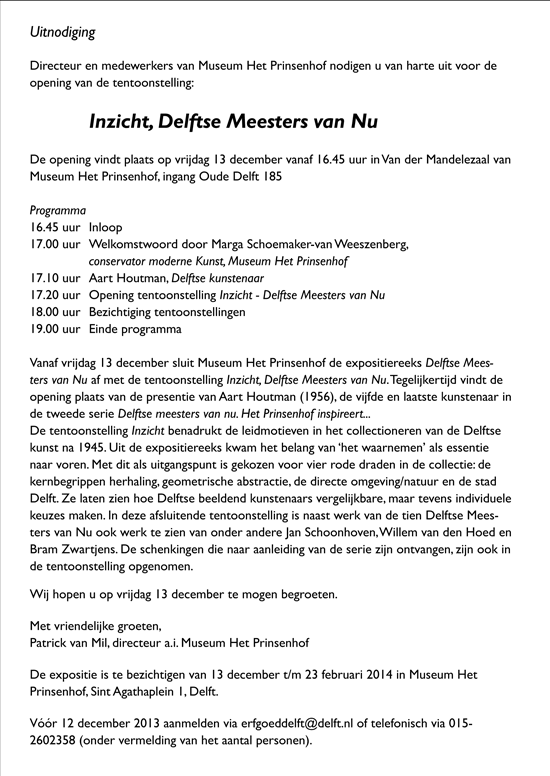 |
Restoration and reconstruction of brick mosaics |
|
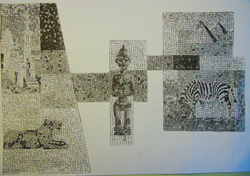 1. Original state in 1957 |
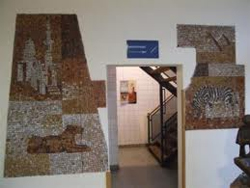 2 . Mosaic partially destroyed |
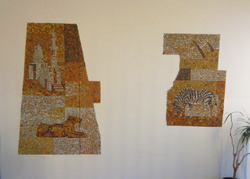 3. Wall restored |
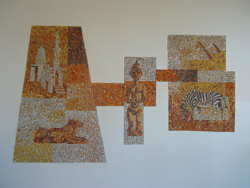 4. Reconstruction 2012 |
Jan Groenestein |
Restoration |
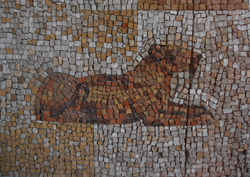 |
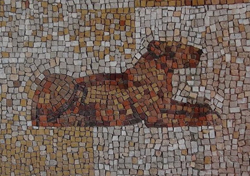 |
Reconstruction |
With this as a reference I was able to compare the shades of gray with the parts
of the mosaics still intact and determine the color scheme of the missing central figure. |
 |
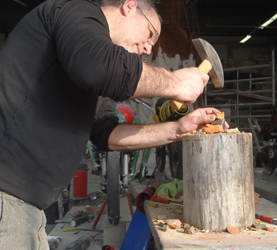 |
When this was done it could be easily transported to site. |
These were pressed into in place, reajusted and trimmed where necessary. |
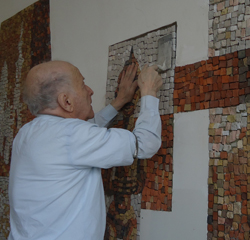 |
 |
Weltauge |
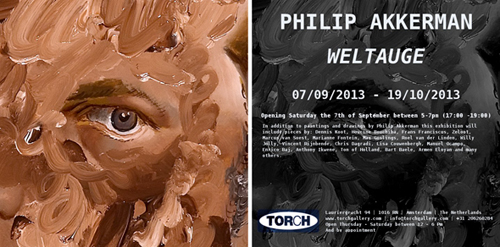 |
|
Dear Sir, Madam, |
Delft-Jingdezhen: The Blue Revolution 400 jaar Exchange |
|
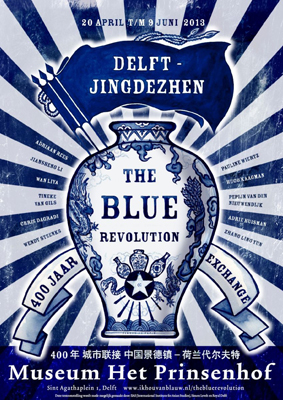 |
|
Nieuwe tentoonstelling in Museum Het Prinsenhof
Van zaterdag 20 april tot en met zondag 9 juni 2013 is de tentoonstelling
‘Delft - Jingdezhen: The Blue Revolution, 400 jaar Exchange' te bezichtigen
in Museum het Prinsenhof in Delft. |
Exhibition inThe Prinsenhof Museum
Saturday, April 20 to Sunday, June 9, 2013 The exhibition takes you on a journey through art and ceramics. |
| Meer informatie/ more information: www.ikhouvanblauw.nl the-blue-revolution Facebook pagina | |
Imperial Porcelain Museum Jingdezhen-Delft:The Blue Revolution |
|
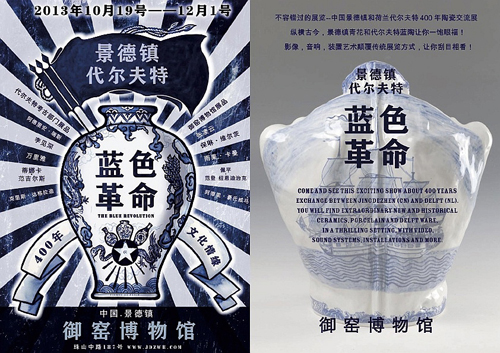 |
|
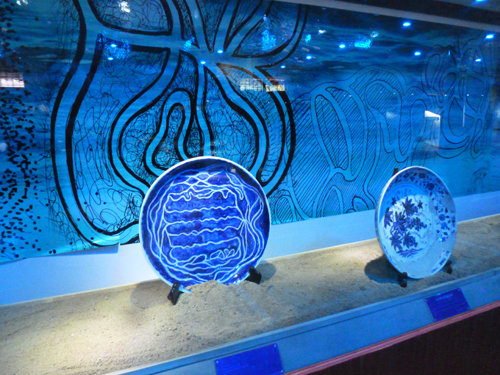 |
|
From October 2013 the exhibition: ‘Jingdezhen-Delft: The Blue Revolution, 400 years of exchange’ can be
seen in the Jingdezhen Imperial Porcelain Museum. This Sino-Dutch exhibition is a cooperation between the
Chinese city of Jingdezhen and the Dutch city of Delft. Both cities have a rich history in manufacturing
ceramics. Jingdezhen is believed to have produced pottery as early as the sixth century. |
They visited each other’s countries and shared knowledge, competence and design. The Blue Revolution
exhibition showcases the results of this exchange with a special focus on the experiences of the artists. |
Delftse Meesters Van Nu / Delft Today’s Masters |
|
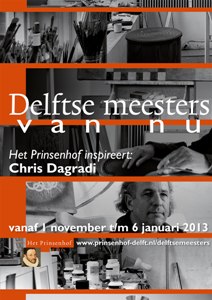 |
 Museum Het Prinsenhof, Sint Agathaplein 1, Delft |
De Delftse beeldend kunstenaar Chris Dagradi, vierde kunstenaar in de serie‘Delftse meesters van nu’, heeft gekozen voor het
schilderij Segmento, een recent werk uit zijn eigen collectie en voor de Caert Figuratief, door Johannes de Ram e.a, 1703,
uit de collectie van het museum. |
The Delft artist Chris Dagradi is the fourth artist in the serie 'Delfts: Today’s masters’ The presentation includes a film interview and studio portrait photographs by the Delft photographer Marco Zwinkels recently acquired by the museum. In the series of Delft masters now a loose-leaf catalog of the Delft masters will now appear in the collection. The presentation can also be viewed online via youtube |
Restauratie van een mozaïek beeld |
|
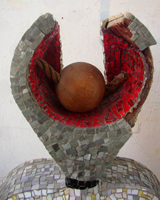 voor en na |
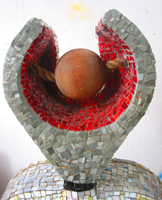 before and after |
|
Harry van Kruiningen. (1906-1996)
was een graficus, grafisch ontwerper, illustrator, monumentaal kunstenaar, wandschilder,
kunstschilder, vervaardiger van mozaïeken en docent aan de Academie voor Beeldende Kunsten te Arnhem. |
Harry Van Kruiningen (1906-1996)
was a graphic artist, graphic designer, illustrator, mural artist, painter, creator of
mosaics and lecturer at the Academy of Fine Arts in Arnhem. |
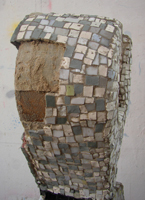 voor en na |
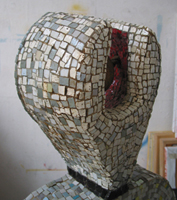 before and after |
|
De staat van het beeld
Het beeld is 150 x 45 cm, een van een stel, deze stelt de mannelijk figuur voor. |
The condition of the image
This mosaic sculpture from 1950 is 150 x 45 cm is one of a pair. |
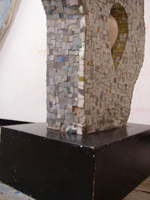 |
 before and after |
|
Behandeling
Los gekomen lijm/mozaïek brokken paste niet meer op hun plaats door vervormende werking van het vocht. |
Treatment
The surface was thouroughly cleaned and lose chunks of glue, linnen and mosaic decoration were removed. |
 voor en na |
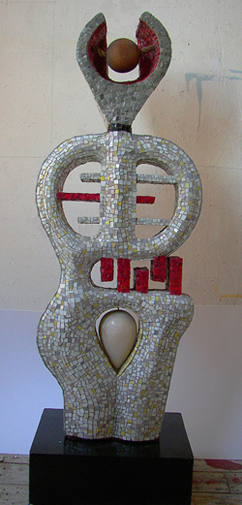 before and after |
Tegel tableau naar een botanische prent van Basilius Besler |
|
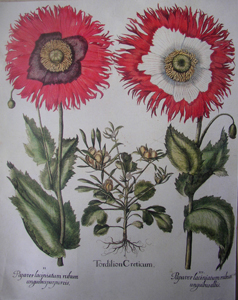 Basilius Besler gravure 1620 Chris Dagradi tegeltableau 2012 |
 |
Basilius Besler ( 1561-1629) |
Basilius Besler (1561-1629)
was a respected German pharmacist and botanist, known for his monumental 'anthology'
( which literally translated means flower book ) 'Hortus Eystettensis', published in 1613. |
 |
|
Popta Cultura Bunta Zomerfestival |
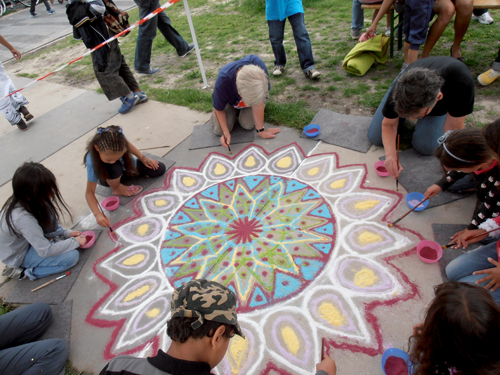 Zandtapijt, Bezoekers doen mee om een Zandtapijt te creëren. |
|
Zandtapijt |
Boerol |
|
Boerol is het meest verrassendste festival van de regio. |
Boerol is dit jaar op zaterdag 30 juni, van 10.00 tot 18.00 uur. |
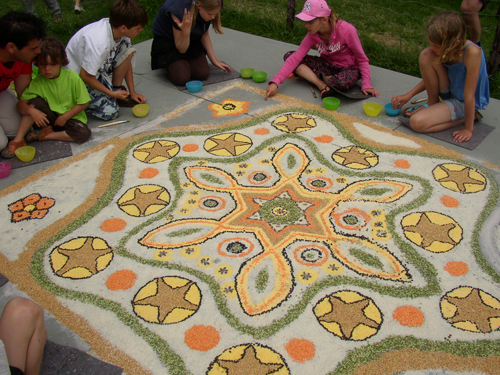 |
|
Graantapijt
Bezoekers doe mee om een ‘Graan tapijt’ te creëren geïnspireerd door Tibetaanse zandmandala’s,
Navajo zandschilderijen en Rangoli uit India. |
Graincarpet
Visitors join in to create a ‘Grain Carpet’ is inspired by Tibetan sand mandalas,
Navajo sand paintings and Rangoli Indian. |
0 so le mio, ontmoetingsplek Buitenhof |
|
 |
 |
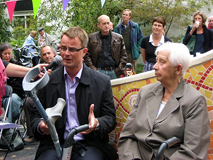 |
 |
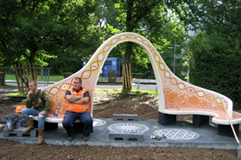 |
 |
‘O sole Mio’ ontmoetingsplek |
‘O sole Mio’ meeting point |
Levensbloem |
 |
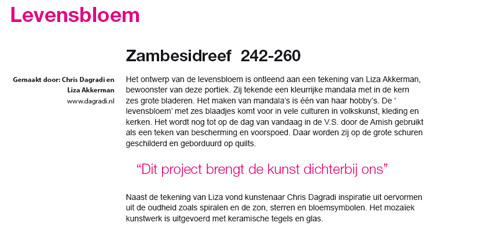 |
Black &Blauw & Bloemen |
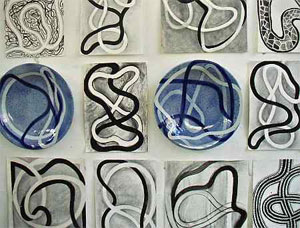 |
|
Galerie 59 Amsterdam |
Project Stationsplein |
||
 |
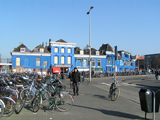 |
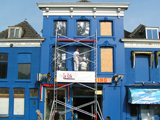 |
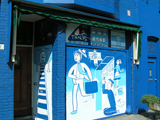 |
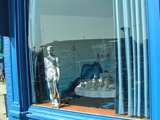 |
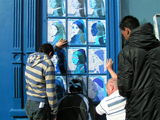 |
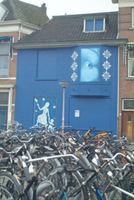 |
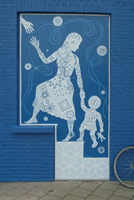 |
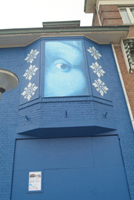 |
Gebouwen beschilderd voordat ze halverwege 2009 worden gesloopt |
||
Coriolus Molen |
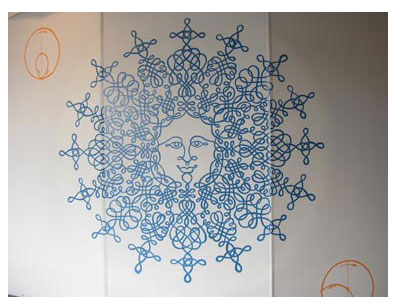 |
Gebouw voor Technische Natuurkunde, |
Holland Gift Shop |
 |
Schiphol |
Hotel de Plataan |
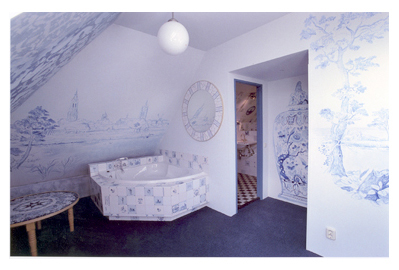 |
Blauwspar-kamer |
Stads-Koffyhuis |
 |
Stads-Koffyhuis, Delft |
Skatepark |
 |
Skatepark, Delft |
Transformation for 9-11 |
 |
tegeltableau 78 x 312 cm. |
Wijkcentrum Wippolder |
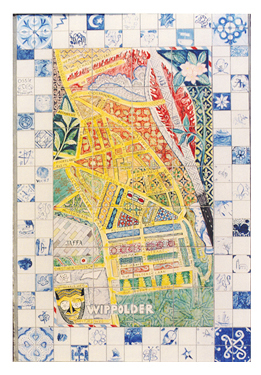 |
Wijkcentrum Wippolder, Delft |
Gevelsteen |
 |
Widar Basisschool, Delft |
Tegeltableau |
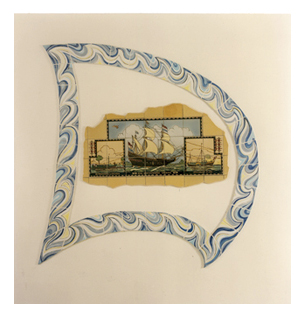 |
Freinetschool, Delft |
Hommage aan Gaudi’ Marianne Burgers |
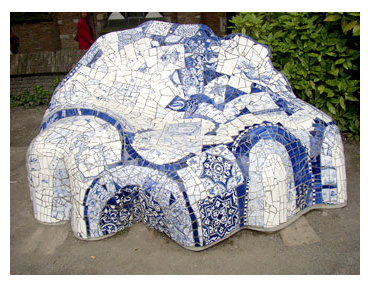 |
Delft |